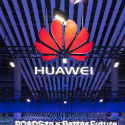China's biggest network equipment vendor is now emerging as a 5G chip powerhouse.

With the dramas around Huawei's supply chain, it has been easy to overlook the company's rapid rise in handset chips.
This month it will unveil its next 5G device chip, the Kirin 990, and its flagship Mate 30 phone, powered by the current Kirin 985 chipset.
Both are markers for Huawei as a new chip powerhouse and underline how, with Intel's exit from the market earlier this year, the sector's center of gravity is shifting toward Asia.
Aside from Qualcomm, the market leader, the only companies so far to have developed chipsets for 5G devices are Huawei, Samsung, MediaTek and Chinese state-owned firm Unisoc Communications.
The US-China tech war appears to have accelerated a trend that was already underway.
Qualcomm boss Steve Mollenkopf has said that the dispute is encouraging Chinese customers to shift to local supply and has led to fewer China orders.
Huawei's semiconductor subsidiary HiSilicon has been designing device chips for more than a decade, although its first significant product appeared only about seven years ago.
Until the US blacklisting announced in May, HiSilicon competed against Qualcomm to be chosen for Huawei phones.
Now its Kirin and Balong chips might be the parent company's only choices, although they don't appear to be a big disadvantage.
The Kirin 990 is tipped to be Huawei's first 5G system-on-a-chip (SOC). The commercial release date is unclear, but some reports have said the company is aiming for year-end.
That would be a jump on Qualcomm and MediaTek, which are targeting the first half of 2020 for commercial release.
Want to know more about 5G? Check out our dedicated 5G content channel here on
Light Reading.
But HiSilicon is not the only Chinese player with 5G chip capability.
Unisoc Communications, a unit of state-controlled tech conglomerate Tsinghua Unigroup, launched its 5G chipset Makalu at MWC in February.
A supplier to smaller handset makers such as Lenovo, Hisense and ZTE, Unisoc emerged six years ago as part of a government drive to consolidate the semiconductor sector. It acquired two Chinese chip designers, Spreadtrum and RDA Microelectronics, for a total of $2.5 billion.
In the last two years it has tapped a number of ex-Huawei executives, including CEO Steve Chu, and has tipped in some $200 million to revamp its product line.
Unisoc believes it can make a low-cost SOC commercially available in the second half of 2020, Nikkei Asian Review reported last month.
As Nikkei wrote, the ability to do that in this timeframe would represent a "significant acceleration of its ambitions" after its partnership with Intel folded earlier this year.
— Robert Clark, contributing editor, special to Light Reading
Read more about:
AsiaAbout the Author(s)
You May Also Like











